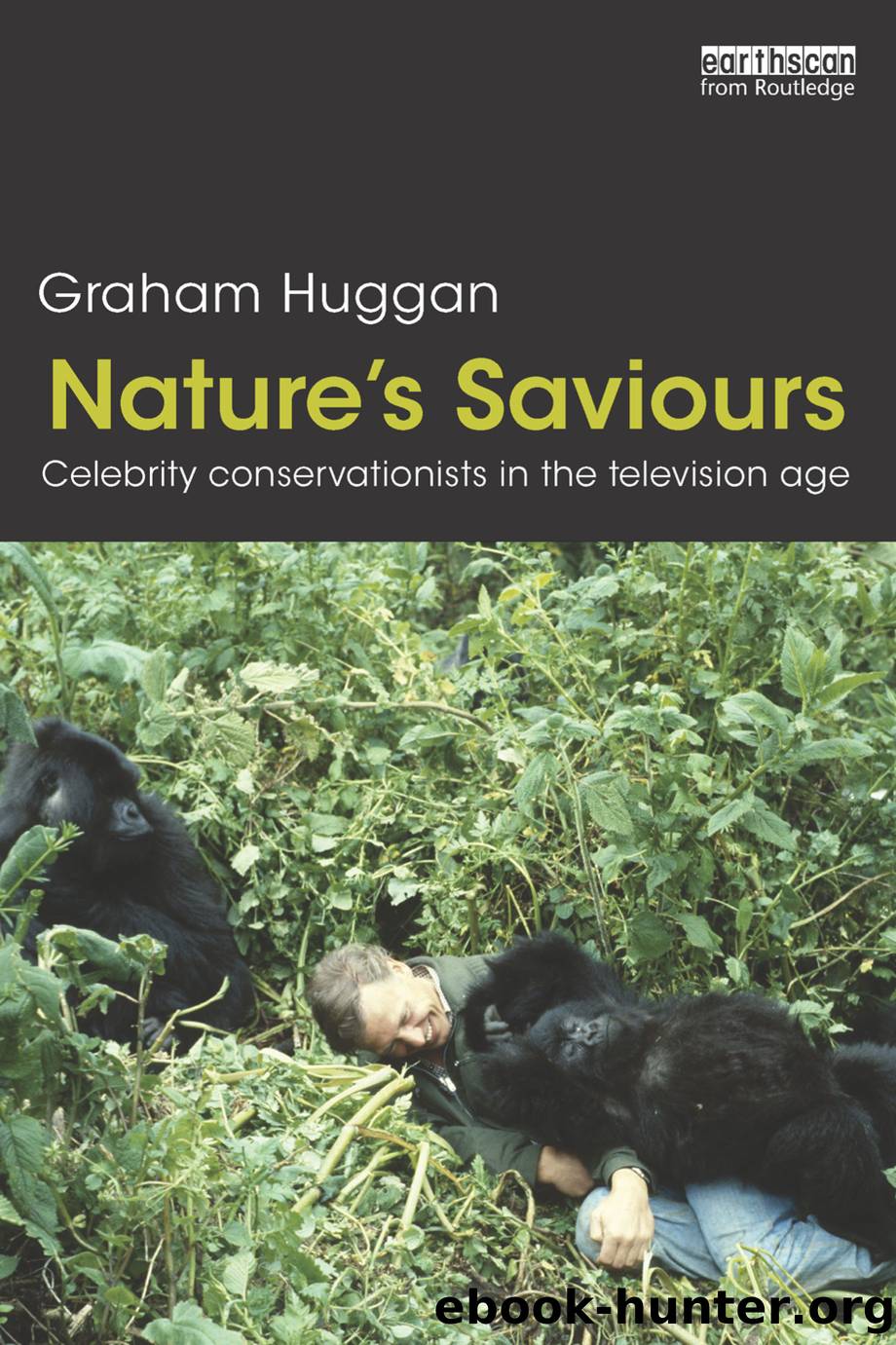Nature's Saviours by Huggan Graham;

Author:Huggan, Graham;
Language: eng
Format: epub
Publisher: Taylor & Francis Group
Published: 2013-08-15T00:00:00+00:00
In what follows, I will look at how some of these ambiguities play out in Search for the Great Apes (1975, henceforth Search), which â pre-Gorillas in the Mist â probably did more than any other media vehicle to cement the popular image of Fossey as a solitary, driven figure, single-minded in her pursuit to become part of the mountain gorillas' world.
Aired in 1975 on ABC, Search has proved to be one of the most durable of the National Geographic Specials. Like many of these films, it offers an example of blurred genres, moving seamlessly between anthropological and zoological registers, and combining elements of scientific documentary, expedition photography and discovery narrative, all folded into its general design of evolutionary quest. Typically for National Geographic productions, it âquietly backs away from political issuesâ without leaving its wider conservationist message in doubt (Wilson 1992: 142). Structurally, it cross-cuts between on-site footage of Galdikas and her husband tending to orphaned orangutans in the rainforests of Indonesia and a solitary Fossey observing endangered mountain gorillas in equatorial Africa; these co-implicated activities are contained within an evolutionist frame in which both âjungleâ (adventure) and ârehabihtant (advocacy) narratives are grafted onto what the voice-over announces as âan intensive worldwide effort to understand man's closest living relatives, the great apesâ. The emphasis throughout is not just on studying the apes, but also on making contact with them â preferably first contact insofar as the film seeks to portray Galdikas and Fossey as pioneering figures playing out colonialist/primitivist fantasies of discovery in tropical wilderness worlds. At the same time, the programme undercuts the logic it sets up: Galdikas and Fossey are scientists not explorers, they are women not men, and their work takes place â particularly Fossey's â in populated areas where other human beings have not only long since learned to live with animals and are familiar with their habits, but have also learned to exploit this knowledge to their own advantage in conditions where the immediate struggle for existence outweighs the mounting awareness of ecological threat.
Search's various âfirst-contactâ scenarios (Galdikas's is the first intensive study of orangutans in the wild, Fossey's is the first reciprocated human-gorilla touch) may thus be seen as being overwritten by the social, political and technological conditions that make them possible, but that its interconnected narratives of discovery â which implicitly take in both the making of history and the recovery of origins beyond history â require it to suppress. âFirstâ, in fact, becomes an ironically belated term, revealing other âfirstsâ that exist in an anterior relationship to it; it is also a term that exhibits its own impermanence, just as beginnings are also endings, evolution co-implies extinction, and the first over time must fold inexorably into the last. Search inhabits these ironies, at least to some degree, and neither Galdikas nor Fossey can be accused of ignoring them_ after all, studying an orangutan or a gorilla for what it might say about human origins does not work too well if there are no orangutans or gorillas left.
Download
This site does not store any files on its server. We only index and link to content provided by other sites. Please contact the content providers to delete copyright contents if any and email us, we'll remove relevant links or contents immediately.
Still Foolin’ ’Em by Billy Crystal(36214)
Spell It Out by David Crystal(35999)
The Great Music City by Andrea Baker(31211)
Professional Troublemaker by Luvvie Ajayi Jones(29548)
Trainspotting by Irvine Welsh(21461)
Call Me by Your Name by André Aciman(20331)
We're Going to Need More Wine by Gabrielle Union(18914)
The Secret History by Donna Tartt(18770)
Cat's cradle by Kurt Vonnegut(15113)
Ready Player One by Cline Ernest(14455)
Molly's Game by Molly Bloom(14030)
Bombshells: Glamour Girls of a Lifetime by Sullivan Steve(13933)
The Goal (Off-Campus #4) by Elle Kennedy(13382)
Leonardo da Vinci by Walter Isaacson(13114)
4 3 2 1: A Novel by Paul Auster(12234)
The Social Justice Warrior Handbook by Lisa De Pasquale(12088)
The Break by Marian Keyes(9273)
Crazy Rich Asians by Kevin Kwan(9136)
Adultolescence by Gabbie Hanna(8789)
